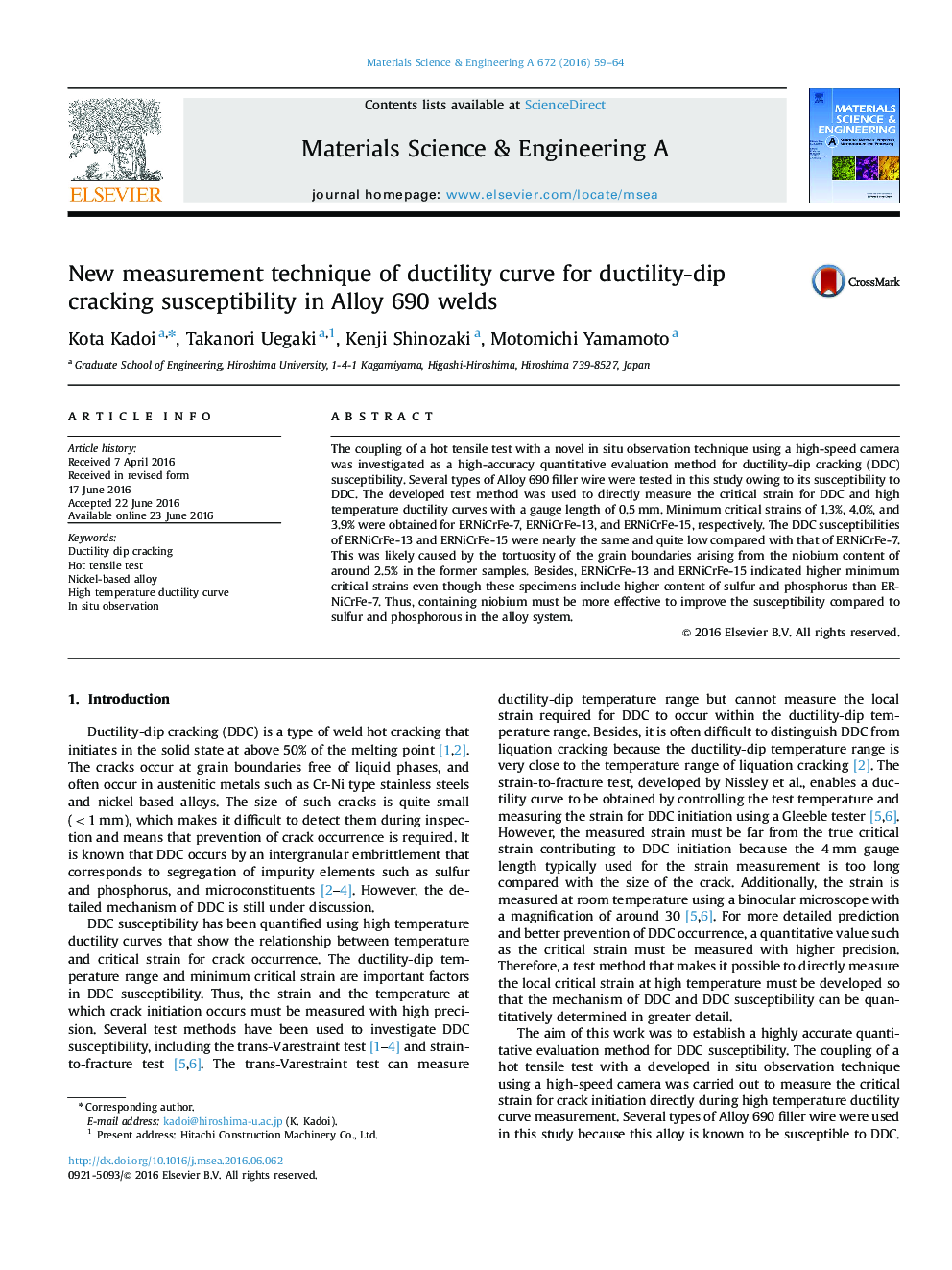| Article ID | Journal | Published Year | Pages | File Type |
|---|---|---|---|---|
| 7975173 | Materials Science and Engineering: A | 2016 | 6 Pages |
Abstract
The coupling of a hot tensile test with a novel in situ observation technique using a high-speed camera was investigated as a high-accuracy quantitative evaluation method for ductility-dip cracking (DDC) susceptibility. Several types of Alloy 690 filler wire were tested in this study owing to its susceptibility to DDC. The developed test method was used to directly measure the critical strain for DDC and high temperature ductility curves with a gauge length of 0.5Â mm. Minimum critical strains of 1.3%, 4.0%, and 3.9% were obtained for ERNiCrFe-7, ERNiCrFe-13, and ERNiCrFe-15, respectively. The DDC susceptibilities of ERNiCrFe-13 and ERNiCrFe-15 were nearly the same and quite low compared with that of ERNiCrFe-7. This was likely caused by the tortuosity of the grain boundaries arising from the niobium content of around 2.5% in the former samples. Besides, ERNiCrFe-13 and ERNiCrFe-15 indicated higher minimum critical strains even though these specimens include higher content of sulfur and phosphorus than ERNiCrFe-7. Thus, containing niobium must be more effective to improve the susceptibility compared to sulfur and phosphorous in the alloy system.
Related Topics
Physical Sciences and Engineering
Materials Science
Materials Science (General)
Authors
Kota Kadoi, Takanori Uegaki, Kenji Shinozaki, Motomichi Yamamoto,
